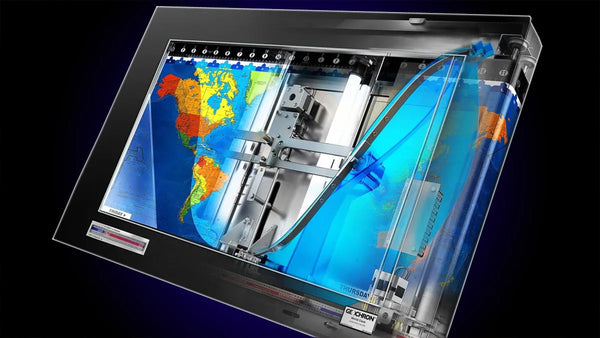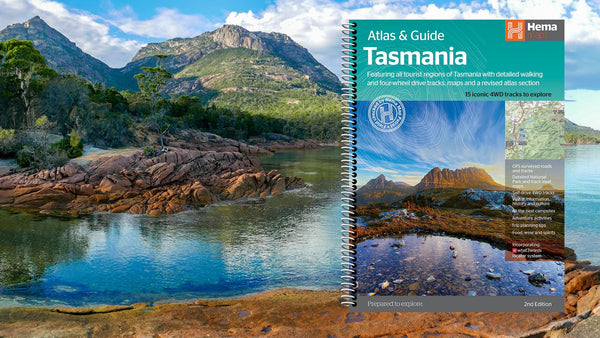- Australia ▾
- Topographic
▾
- Australia AUSTopo 250k (2024)
- Australia 50k Geoscience maps
- Australia 100k Geoscience maps
- Australia 250k Geoscience maps
- Australia 1.1m Geoscience maps
- New Zealand 50k maps
- New Zealand 250k maps
- New South Wales 25k maps
- New South Wales 50k maps
- New South Wales 100k maps
- Queensland 10k maps
- Queensland 25k maps
- Queensland 50k maps
- Queensland 100k maps
- Compasses
- Software
- GPS Systems
- Orienteering
- International ▾
- Wall Maps
▾
- World
- Australia & New Zealand
- Countries, Continents & Regions
- Historical
- Vintage National Geographic
- Australian Capital Territory
- New South Wales
- Northern Territory
- Queensland
- South Australia
- Tasmania
- Victoria
- Western Australia
- Celestial
- Children's
- Mining & Resources
- Wine Maps
- Healthcare
- Postcode Maps
- Electoral Maps
- Nautical ▾
- Flags
▾
- Australian Flag Sets & Banners
- Flag Bunting
- Handwavers
- Australian National Flags
- Aboriginal Flags
- Torres Strait Islander Flags
- International Flags
- Flagpoles & Accessories
- Australian Capital Territory Flags
- New South Wales Flags
- Northern Territory Flags
- Queensland Flags
- South Australia Flags
- Tasmania Flags
- Victoria Flags
- Western Australia Flags
- Gifts ▾
- Globes ▾
Dear valued customer. Please note that our checkout is not supported by old browsers. Please use a recent browser to access all checkout capabilities
Of Bearings and Bravado: A Guide to the Baseplate, the Mirror, and the Lensatic Compass

There comes a moment in every journey—somewhere between the comfort of certainty and the thrill of “I think it’s this way”—when you realise your life would be markedly better if you simply knew which way was north. Not metaphorically. Literally.
Enter the compass.
Now, the compass may seem an antiquated thing to those who believe Google Maps is cartographic gospel. But if you’ve ever lost signal in a snowstorm, or stared at a dead phone battery in the belly of the bush, you’ll know that nothing steadies the soul like that little red needle doing its thing—quietly, consistently, and without a whiff of ego.
But not all compasses are created equal. And not all users require the same kind of kit. So today, we examine three time-honoured tools: the baseplate compass, the mirror sighting compass, and the lensatic compass. And to bring these categories to life, we draw upon the work of those Swedish sages at SILVA—masters of magnetic modesty and purveyors of precision.
The Baseplate Compass: Elegant Utility

Starring: The Ranger Compass by SILVA
Think of the baseplate compass as the Oxford shoe of navigation—clean, reliable, and perfect for the well-prepared wanderer.
The SILVA Ranger is a beautiful example of this form. It has all the hallmarks of a classic:
-
Transparent baseplate with ruled edges for measuring maps
-
Rotating bezel marked in degrees (0–360°)
-
Red orienting lines and arrow for aligning with grid north
-
Declination scale, because honesty about magnetic variance is a virtue
-
Luminous markings, for late-night nav and early-morning ambitions
It is the compass you take on a hike when you want reliability without fuss. The kind of instrument that tucks neatly into a breast pocket, nestled between your topographic map and your quiet confidence.
How to Use It:
-
Lay your map out and place the Ranger on your chosen route.
-
Line up the edge of the baseplate from your current location to your destination.
-
Rotate the bezel so the orienting lines align with the map's grid lines.
-
Adjust for declination, using the scale inside the bezel (if you're in Australia, generally subtract 10–12 degrees).
-
Lift the compass and turn your body until the red needle nestles in the orienting arrow—"put red in the shed."
-
Walk in the direction of the direction-of-travel arrow.
In short, the Ranger is for hikers, hillwalkers, and honest-to-goodness map readers. It is the compass for people who like their navigation slow, sure, and analogue.
The Mirror Sighting Compass: Precision with a Reflection

Starring: The Expedition S Compass by SILVA
Now we move to the mirror sighting compass—the jazzed-up cousin of the baseplate, built for those who want their bearings dead accurate and their instruments slightly theatrical.
The SILVA Expedition S is a triumph of form and function. Designed for professionals and navigational obsessives, it offers:
-
All the features of the Ranger, plus:
-
A flip-up mirror with sighting line for pinpoint accuracy over distance
-
Clinometer for measuring slope angles (useful for skiers, climbers, and smug people)
-
Lanyard with scale cards—because SILVA understands we like our toys
-
High-contrast, fast-set needle for quick decision-making in the field
The mirror sighting compass shines when you need to take a bearing on a distant feature—a ridgeline, a radio tower, or the ridge you’re halfway up with a storm rolling in.
How to Use It:
-
Open the mirror lid so you can see both the compass capsule and the distant target.
-
Hold the compass at eye level and sight the landmark through the notch while lining up the mirror.
-
Rotate the bezel until the needle is in the orienting arrow.
-
Read the bearing in the mirror—you now have a precise azimuth.
-
On the map, set the bearing, line up the compass, and draw your line.
This is the compass for mountaineers, SAR teams, field scientists, and anyone who wants to navigate with surgical precision and a touch of flair. The mirror makes you feel like you’re planning something important. And with the Expedition S, you probably are.
The Lensatic Compass: Military-Grade Gravitas

Starring: The 55 6400/360 Military Compass by SILVA
And now, we come to the lensatic compass—favoured by armies, geologists, and people who prefer khaki to Gore-Tex.
The SILVA 55 6400/360 MILS Compass is a magnificent creature. It’s compact, metal-clad, and unapologetically precise. Unlike the previous two, which operate in civilian-friendly degrees (0–360°), this beast works in mils (6400 per circle)—a system developed for artillery and fine-tuned targeting.
It features:
-
Flip-up sighting cover with lens for real-time bearing readouts
-
Thumb loop for rock-steady handholding
-
Fixed capsule (the whole housing rotates, not just the bezel)
-
Military-grade tritium or phosphorescent elements (depending on model) for low-light ops
-
Shock-proof construction, waterproofing, and a general air of “Don’t worry, I’ve got this.”
The 55 MILS is not for your Sunday bushwalk. It’s for plotting artillery fire, calculating triangulation in the field, or if you’re simply someone who believes over-engineering is a way of life.
How to Use It:
-
Open the cover and lens, and hold the compass horizontal at eye level.
-
Look through the sighting notch while aligning the wire with your distant object.
-
Simultaneously, read the bearing through the lens magnifier—it’s in mils, so be prepared to convert if needed.
-
Use the measured azimuth to navigate or transfer to a map using conversion tools (1 mil ≈ 0.05625 degrees).
While more complex, this compass rewards precision. With practice, it becomes second nature. And even if you never call in artillery, you’ll feel like you could.
Which One Is Right for You? A Civilised Comparison
| Feature/Use | Ranger (Baseplate) | Expedition S (Mirror) | 55 6400/360 (Lensatic) |
|---|---|---|---|
| Best For | Hikers, recreational nav | Professionals, mountaineers | Military, geologists, surveyors |
| Sighting Type | None (line of sight) | Mirror | Lens with magnifier |
| Precision | Good | Very High | Extreme (Mils) |
| Ease of Use | Very Easy | Moderate | Moderate to Complex |
| Mapping Compatibility | Direct with baseplate | Direct with baseplate | Requires mil-degree conversion |
| Durability | High | Very High | Military-grade |
| Cool Factor | Trusty | Adventurous Explorer | Cold War Spy meets SAS |
| Map Use | Excellent | Excellent | Limited |
Final Thoughts: Choose Your Tool, Choose Your Temperament
There is no wrong compass—only the one that suits your journey and your temperament.
-
If you love maps, tea, and careful preparation, the Ranger is your companion.
-
If you climb ridgelines for breakfast and make decisions in sleet, the Expedition S will never let you down.
-
And if you were born fifty years too late to lead an Antarctic expedition or command a reconnaissance patrol, the 55 6400/360 will at least make you feel like you did.
Each compass is a commitment—not just to direction, but to doing things properly. In a world of digital overkill, the compass remains a quiet rebellion. A red needle, a white face, and the reassuring knowledge that true north doesn’t care about your Wi-Fi signal.
So choose well. Hold steady. And remember: sometimes the best way to move forward is to look down, find north, and stride out with a map in one hand and a SILVA compass in the other.
Leave a comment
Comments will be approved before showing up.
Also in Travel Writings / Product Reviews

Club Med Phuket: Our Full Week in Review
Whether you’re a family chasing a balance between togetherness and independence, a couple craving peace and cocktails, or simply someone ready to trade routine for ritual—this is your place.

Where the Sun Never Sets: A Glorious History of Geochron World Clocks
The Geochron, whether mechanical or digital, offers more than information. It offers perspective. It reasserts the idea that we are part of a rotating story—lit by the sun, divided by clocks, and unified by the gentle ticking of planetary rhythm.

Tracks, Trails & Tassie Tales: A Rambler’s and Rover’s Guide to Tasmania
Tasmania doesn’t just offer adventure. It insists on it. It pulls you into its wilderness, tests your knees and diff locks, and then offers you a view that resets your understanding of beauty.
Christopher O'Keeffe
Author